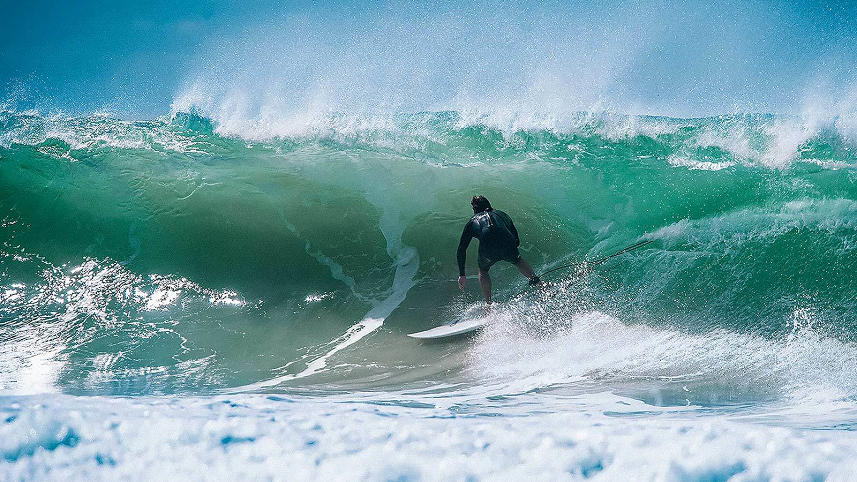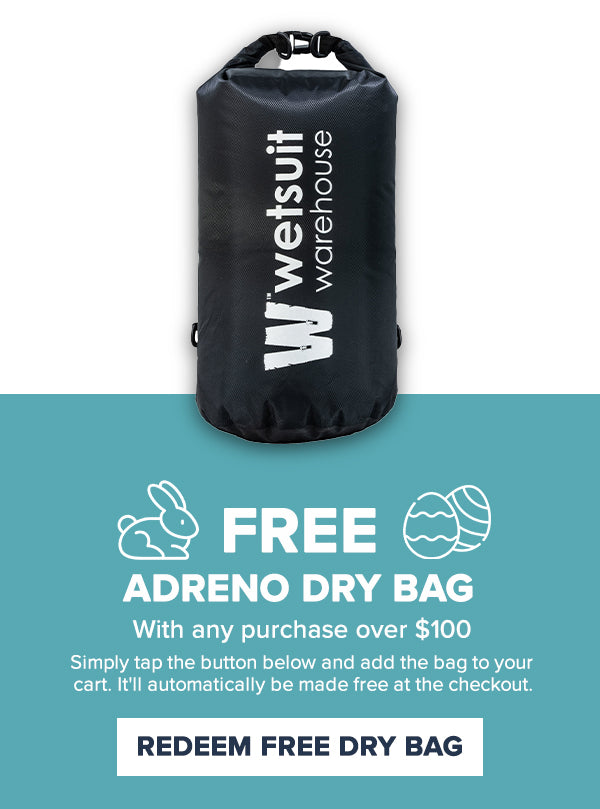The Ultimate Guide to Surf Wetsuits
June 23, 2021 5 min read

When purchasing a surfing wetsuit there’s ample choice in cut, design, style and brand, so if you don’t know what you’re looking for it can be hard to choose the right one. There are a few things you’ll need to take into consideration when buying a new surfing wettie, whether you’re just getting started or you’re an experienced surfer.
Wetsuit Size
The first and maybe most important factor you’ll need to consider for your suit is size. Wetsuit sizing will vary from brand to brand so it’s important you reference the size chart for the relevant brand you’re looking at, or better yet, head in store and try them on. Ideally, you want your wetsuit to fit like a second skin without restricting your range of motion. Having a suit that’s a little too big might make donning & doffing easier, but it’s going to hinder the suits’ function and ultimately your experience in the water. Similarly, squeezing into a wettie that’s too small can reduce its water sealing and increases the likelihood of a tear.
Wetsuit Thickness
The thickness of your suit will depend on where you’re surfing and what time of the year it is. But one of the most important factors of wetsuit thickness is preference, which is something that can vary a lot from person to person. This takes time in the water to figure out, but generally for temperate waters (i.e. around South-East Queensland and Northern NSW) usually a 3/2mm Steamer will suffice for during winter. Personally, I spend most of my time surfing on the Gold Coast and a 2mm short sleeve steamer is plenty warm enough. Further North, most people will opt for a 2mm Spring Suit or even just a Neoprene Jacket for through the winter. Once you’re getting into those colder south coast waters, depending on how thick your skin is, jumping into a 4/3mm or even a 5/4 might be more appropriate.
Wetsuit Seams
Another important factor of your wetsuit is the stitching. Stitching plays a huge role in the durability and sealing capabilities of the wetsuit and can drastically change how flexible a suit feels and performs. There’s a fair bit of variability when it comes to seam styles and it can be a bit to wrap your head around, but we’ll give you a rundown on the basics.
There are four main types of seams you’ll see on your surfing suits:
-
Flatlock or E-Stitch
Flatlock seams are the most basic wetsuit seam in the wetsuit world and is very common in entry-level surf suits. Flatlock is quick to lay, durable and effective at keeping the suit in one piece although it is not the best in terms of warmth. E-stitching is a style birthed by Rip Curl and is similar in terms of sealing, offering a little extra stretch.
-
Glued and Blind-Stitched Seam (GBS)
A GBS seam is where things step up a notch, particularly in terms of sealing, and is ideal for the weekend warrior but if you’re going to be surfing in your suit more than 3 times a week you might want to consider taped seams. A blind stitch doesn’t completely penetrate through the neoprene, so pinholes present in a flatlock that facilitate water infiltration aren’t present. On top of this the seams are glued, so you’re looking at fairly effective sealing capabilities.
-
Taped/Welded Seams
Taped seams are an extension of GBS and are a tape that run along the inside of the seam that result in another level of seal and is the most durable kind of seal. You’ll find taped seams on your high-end suits like the Rip Curl Flashbomb. Welded seams work in a similar fashion and run along the inside of the suits seam using a flexible glue.
Wetsuit Entry Systems
The entry system of your wetsuit plays a large role in its overall function. The type of zip used will influence the suits overall flexibility, seal and ease of entry. Today, surfing suits are tending towards chest enclosures, as they maximise paddle flexibility, back flexibility and limit cold water flushing. Unfortunately, all zips are inherently permeable to water. However, backing the zipper with neoprene forces the water to exit the suit.
However, the best kind of zip is actually no zip at all. Zipperless suits are the stretchiest suits out there, as the flexibility isn’t compromised by the zip. You get all the benefits of a chest zip without limiting stretch in both paddling and general movement.
For entry-level suits you’ll find that most will feature a back-zip. Back-zips are easiest to get on and off but aren’t as warm as a chest zip and don’t offer the same ease of movement.
Wetsuit Styles
There are many styles from the steamer to the long jane and aside from fit, the most important thing to consider is more rubber = more warmth = less stretch. Also, it’s worth noting that you can always cool yourself down inside a wetsuit by opening the neck and flushing cold water into the chest area. Here’s a rundown on the different wetsuit styles:

These wetsuits have no sleeves for paddle freedom and are great at keeping your vitals warm and warm vitals mean your body isn’t working hard to keep core temps at 37º. Tropical waters are ideal for short johns not for warmth but for comfort as neoprene provides better barrier against sore ribs and rashes than a typical rashie does. The short jane is the same suit but for the ladies.

The aptly named long john is a short john or jane with long legs! Again, these suits provide your body with warmth without compromising paddle freedom.

The spring suit is one of the two main wettie styles, the other being the steamer. The spring suit is a short-arm short-leg wetsuit designed to keep your core warm but providing flexibility in two key stretch zones: knees and elbows. In Australia, a good spring-suit can be worn comfortably almost all year round, depending on how you feel the cold, and more so what type of seam and zip it has.

When you think of a wetsuit this is probably what you picture. Steamers are the most effective suit at maintaining warmth as they cover your whole body except you head, hands and feet. These are ideal for Winter and can be worn in the transitional seasons as well. If you are a winter warrior and want to be extra toasty you might want to consider a hood, gloves, and booties as well.
Wetsuit Brands
There are many brands that make surf specific wetsuits and at Adreno we’ve got the best in the business, such as Rip Curl, O’Neill, Billabong, Roxy, Quiksilver, Salt, Xcel and Peak. We stock quality suits for every price range, so check out our different suits on our surfing page to see what’s best for you.
Leave a comment
Comments will be approved before showing up.


